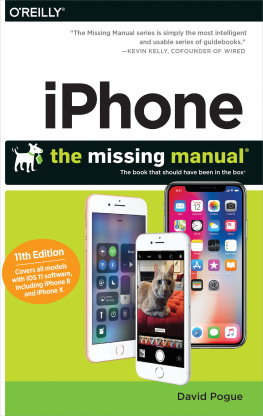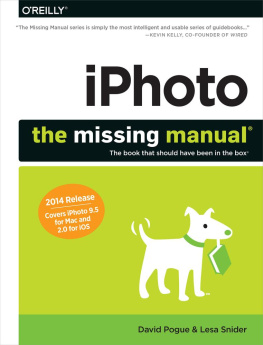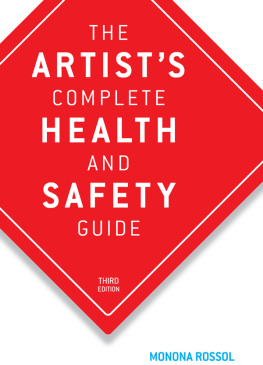
Copyright 2012 by Dwight W. Pogue
All rights reserved.
Published in the United States by Watson-Guptill Publications, an imprint of the Crown Publishing Group, a division of Random House, Inc., New York.
www.crownpublishing.com
www.watsonguptill.com
WATSON-GUPTILL is a registered trademark and the WG and Horse designs are trademarks of Random House, Inc.
Library of Congress Cataloging-in-Publication Data
Pogue, Dwight W.
Printmaking revolution: new advancements in technology, safety, and sustainability/ Dwight W. Pogue.- 1st ed.
p. cm.
Includes bibliographical references and index.
1. PrintsTechniqueEnvironmental aspects. 2. Artists materialsEnvironmental Aspects. I. Title.
NE863 .P64 2012
760-dc22
eISBN: 978-0-8230-0813-1
2011020606
Title Page Image: Dwight Pogue, Ruthies Moon Cactus, 2011, four-color separation screenprint on Plike paper, 30 22 inches (76.2 55.8 cm)
This image was printed with TW Graphics 5500 series halftone process water-based inks. The artist produced several drawings on paper and film and then scanned them into Photoshop and merged them into one image. Daniel Bridgman separated the image into CMYK using the AccuArt system and printed out four film positives, which the artist exposed to screens coated with Ulano QTZ (pink) photo emulsion. Printed by Dwight Pogue, assisted by Kate Conlon.
Dedication Page Image:
Kate Conlon, Viking Girl Caught in a Swirl, 2011, eleven-color lithograph on Rives BFK paper, 30 40 inches (76.2 106.6 cm)
Smith College student Kate Conlon drew toner washes on both clear and frosted Mylar. She then cut several Rubylith films as exposure masks as well as for the green and red-pointed wedge shapes. Kate made the solid background image with fine lines using Adobe Illustrator and printed it ut as a film negative using the AccuArt system. She exposed her various substrates onto pre-sensitized plates. She printed two of her plates as color blends. Printed by Kate Conlon, assisted by Dwight Pogue.
Contents Page Image:
Janet Fish, Rosehips Nest, 2004, five-color lithograph on Somerset Velvet paper, 2918 3914 inches (74 100 cm)
This image was created using five drawings in ink washes on frosted Mylar that were exposed on pre-sensitized plates. Proofed by Maurice Sanchez, assisted by students in the 20042005 Smith College Print Workshop. Edition printed by Maurice Sanchez at Derriere LEtoile Studio, New York, NY.
The author and publisher would like to thank the following contributors for providing photographs and drawings for this book:
Kate Conlon provided the drawings on .
Student participants, who volunteered to take occasional photos during Smith College Print Workshops, provided the photographs for the images on .
Mark Zunino provided the photograph for the image on .
Lauren Bennett provided the photographs for the images on .
Petegorsky/Gipe provided the photographs for the images on .
Connie S. Pogue provided the photographs for the images on .
Dwight Pogue provided the photographs for the images on .
Randy Bolton provided the photograph for the image on .
Sandy Skoglund provided the photograph for the image on .
Peter Blum Edition provided the photograph for the image on .
Photograph on courtesy The Pace Gallery and Pace Prints. Chuck Close. Courtesy the Pace Gallery.
v3.1
Dedicated to all students and practitioners of printmaking

CONTENTS

Preface
My purpose in writing this studio manual is threefold: to share the latestand until now unpublishedadvancements in printmaking that I have been privileged to witness and discover; to recount personal stories of how these innovations came about, crediting the inventors; and to educate students and professionals alike on safer studio practices and the latest and safest materials available.
My decision to include stories was inspired by Alois Senefelders book A Complete Course of Lithography (published in English translation in 1819), a fascinating account of his discovery and development of lithography, which reveals not only his dedication and passion but also his resolve when faced with failure. A favorite passage concerns his efforts to build one of the first wooden lithography presses, which used a huge stone for leverage: I was soon deterred from farther improving upon this press, as, on one occasion, I had a very narrow escape from being killed by the great stone of 300 pounds, which always fell from a height of ten feet. I was, therefore, easily induced to pursue another plan for constructing a new and perfectly simple printing press, which I had just conceived.
In recent years two issues have posed significant challenges to faculty who teach printmaking in American colleges: the introduction of digital technology and stricter Environmental Protection Agency requirements. My book addresses both of these issues. It will help faculty elevate studio capabilities to a more professional level, giving students access to the latest advancements, including ways of easily and safely combining digital technology with traditional printmaking. This book will also enable printmaking faculty to share responsibility for maintaining a safer studio with their students. It has been my experience that students will rise to the challenge of following safer studio practices if they are given responsibility and knowledge and realize that others are counting on them.
For more than three decades, I have had the good fortune to learn through collaboration with students and professional artists, printers, and technicians. I have taken advantage of the investigative spirit that teaching encourages, spending countless hours researching and experimenting to find new and better ways of making fine art prints. I can only hope that readers who employ these new methods will find them as beneficial as I have.

Dwight W. Pogue
Northampton, Massachusetts

James Rosenquist, Firefountain II, 2006, eight-color lithograph on Rives BFK paper, 36/ 33 inches (92.4 83.8 cm)
This image was drawn on multiple sheets of Mylar, which were in turn exposed to pre-sensitized plates. Printed by Maurice Sanchez at Derriere LEtoile Studio, New York, NY.
Acknowledgments
Many people have helped make this book possible. I first learned printing in my familys newspaper and printing business, where my parents, Ralph and Ruth Pogue, provided a thorough background in letterpress and in offset lithography.






















